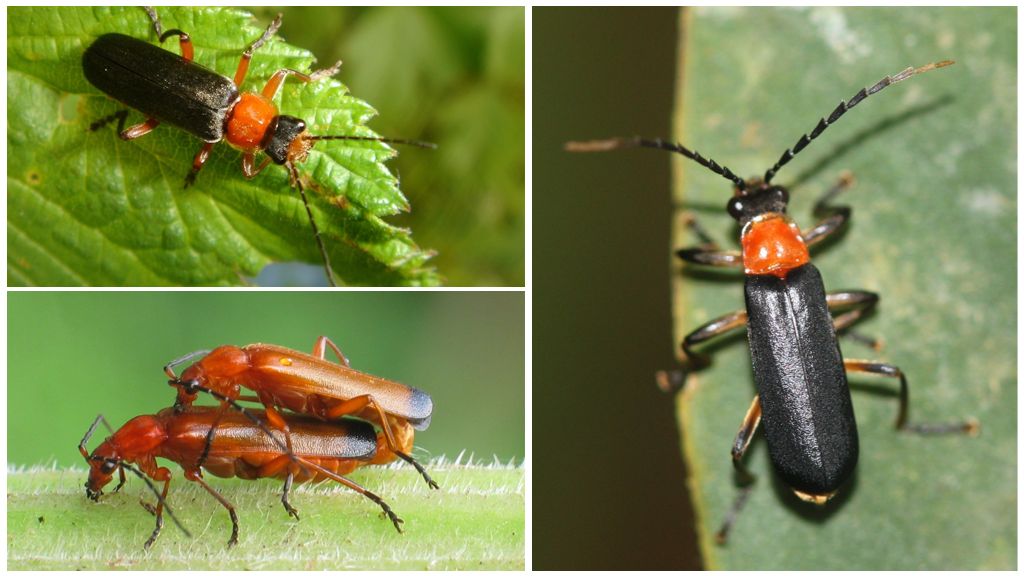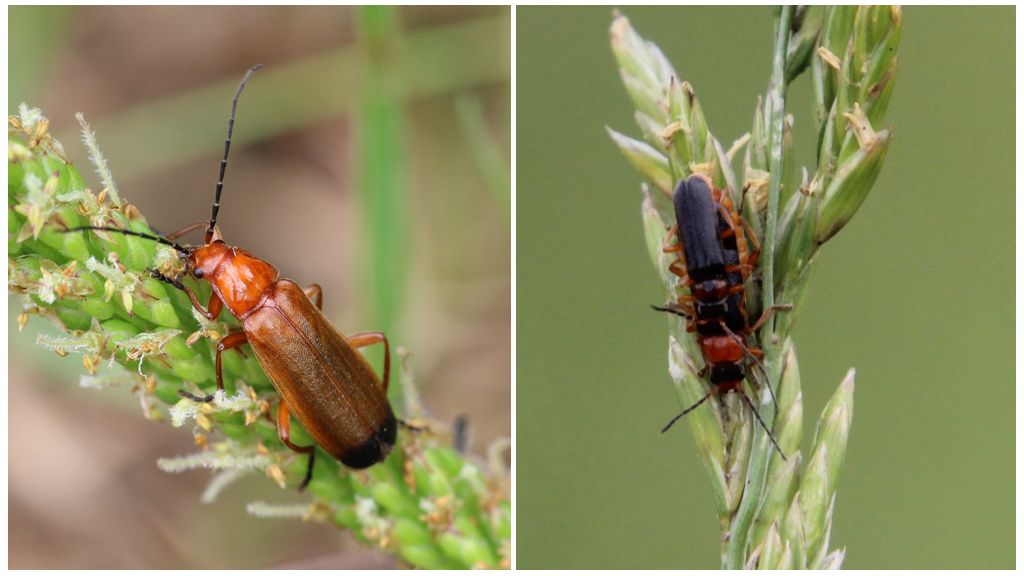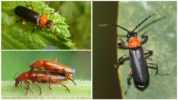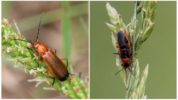- Beetle fireman
- Beetle fireman
It is impossible to mention all the inhabitants of the garden, but it is advisable to know some of them by sight. These include the fireman bug, which is considered a small storm pests on plants. It is difficult to confuse the photo of the firefighter with other representatives of the fauna, its distinctive features stand out from the rest.
What does it look like
The insect fireman got its name because of the unusual color of the body. The medium-sized beetle attracts attention with such characteristic features:
- the body of an adult is not more than 1.5-2 cm with an orange belly;
- elytra black;
- three pairs of legs are brown;
- there is a red mark near the head;
- the head is slightly retracted relative to the body;
- there is a pair of filiform antennae, with 11 joints each.
The soft beetle, as botanists call it, has a light coating of hairs throughout the body. On the paws of both the female and the male there are small claws, in the female, it is larger and more tenacious. It’s easy to distinguish by the sex of the bug; the male is much smaller in size than the female.
Interesting!
The bug is called a fireman because of the outward resemblance to the employees of the fire service, their clothing was once the same color.
In the temperate zone is represented by three main types:
- soft flower;
- soft body bright;
- softfoot red-legged.
Each of the listed species is not dangerous for humans, the maximum harm that a bug can cause is to bite.
Breeding
The beetle does not live long, the average life expectancy of an adult firefighter is only 1.5-2 months. But this term is quite enough for the female to be able to create comfortable conditions for her offspring.

Red beetle firefighter, like its other species, lays fertilized eggs in pre-selected rotten stumps or rotted foliage. Immediately after this, adults die, but after a couple of weeks larvae appear from the laid eggs, which resemble beads collected on a string. The caterpillar eats like an adult bug, paralyzes and eats harmful insects. Closer to autumn, the caterpillar wraps itself in a cocoon, in which it meets winter. In the spring, the insect leaves its home with a full-fledged bug, which repeats the whole process again.
Interesting!
The caterpillar does not leave the place where it hatched from the egg. The only thing that can scare her is the possibility of flooding. Only in this case, in the early spring on the snow, you can observe the appearance of firefighter larvae.

What is useful for a firefighter bug, malicious activity
The adult individual and the larva of the fireman beetle are predators, their main diet is small garden pests. Favorite delicacies recognized:
- aphid;
- flies;
- larvae;
- small tracks.
A beetle fireman will attack them, inject a specific poison, cantharidin. Along with the poisonous substance, the digestive fluid falls on the victim, which softens the tissues and the individual can only absorb the food.
On a note!
At home, they feed on existing pests. If cockroaches settled in the house, then just a couple of bugs will destroy them quickly and soon.
If garden firefighters greatly bred in a small area, then in addition to pests, they begin to eat buds and foliage of garden plants.They love to enjoy cherries, especially before and during flowering.
Whether the fireman is a pest or not, everyone decides for himself, but he brings a lot of benefits, and harm from him can be said to be insignificant.
How to fight
Photos and descriptions allow you to see the insect only on the good side. But in case of a large congestion, beetles can not only help in the garden, but also cause damage. What to do in such cases and how to repel insects from fruit trees and shrubs, there are several methods:
- The easiest and most reliable way is to simply assemble them with your hands. But immediately the question arises whether a fireman bites or not and his bite is dangerous for a person. An insect can bite a person, but there is no danger in this. The poison affects insects, it is absolutely not harmful to humans. However, it is better to play it safe and collect in gloves and clothing that will close your hands.
- A good control option will be a mixture of tobacco and wood ash, they are mixed 1: 3. A more effective result is such a mixture with the addition of ground hot pepper, it is enough to throw it very little. Spicy herbs are not to the firefighter’s liking, Provencal herbs, hops-suneli, cumin will help to drive him off the garden.
- If none of the above methods work, you can use chemicals. An excellent option would be the use of ground chalk for cockroaches Mashenka. The problem areas in the garden are sprinkled with powder, but it should be understood that the effect will only be on adult beetles, eggs and larvae, the powder is absolutely harmless.
Important!
For plants used in food, the use of chemicals is contraindicated.
Interesting Facts
In addition to the bright color, the insect is interesting in that:
- soft body poison has a specific odor;
- the red spot on the pronotum of each beetle is individual, like fingerprints or auricle in humans;
- the insect is not afraid of temperature changes, in moderate latitudes the bug feels fine;
- not afraid of insects and birds of prey, the main defense is poison;
- saving for a fireman may be the ability to pretend to be dead in case of danger;
- the insect is an excellent analogue to the chemical treatment of garden plants from pests;
- the beetle has no upper lip;
- catching a bug in flight is not difficult, its speed of movement is not high.
A firefighter beetle in the garden and in the infield will bring many benefits to relieve plants from aphids, help cope with caterpillars and flies. However, a large number of insects can ruin the harvest of some stone fruits, it is desirable to monitor their numbers.





